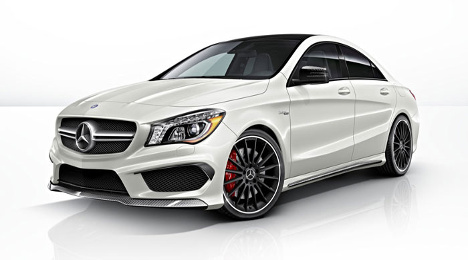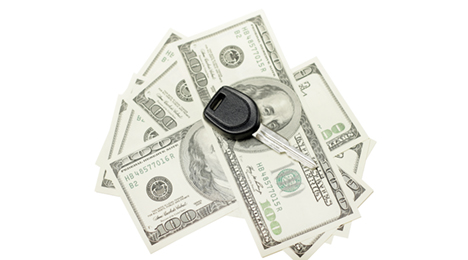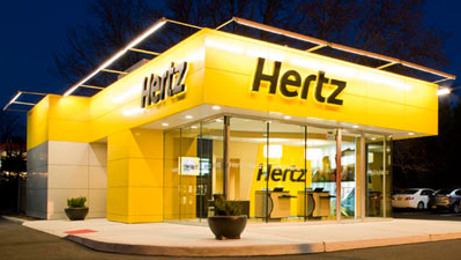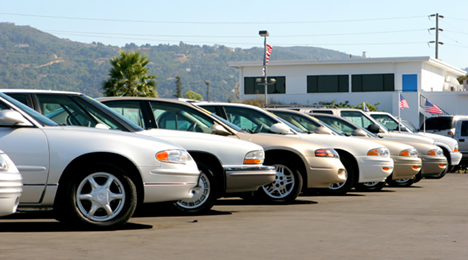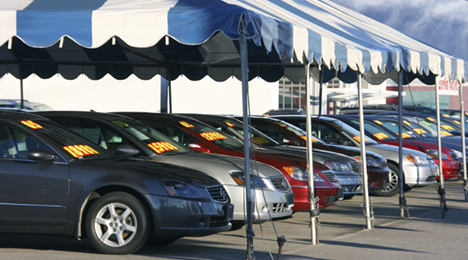As weather warmed up across the country last month, sporty cars were in high demand and short supply.
This is according to the latest installment of vehicle scarcity data that is provided monthly to Auto Remarketing by AutoTrader.com.
As consumers started turning their attention toward sportier rides, many key models in this segment appeared on both the national and designated market area (DMA) scarcity reports in March.
Perhaps a result of the season shift, none of the vehicles highlighted at the top of last month's scarcity reports were on the lists at all in February.
Overall, both the Mercedes-Benz CLA Class and the Volkswagen Golf R stood out nationally, according to AutoTrader.com data, with both units landing on both the certified pre-owned and used national scarcity lists.
These vehicles were also scarce across several DMAs.
Juan Flores, director of operations for AutoTrader.com's Trade-In Marketplace, offered a bit of commentary as to why the Mercedes-Benz CLA’s presence on the list bodes well for MBUSA dealers.
"The presence of the Mercedes-Benz CLA on this list is great for Mercedes Benz dealers. The introduction of a very refreshing style combined with attractive lease offers has stimulated consumer interest to a level that CPO consumers are paying attention,” said Flores. “Dealers should expect this level of vehicle scarcity for quite some time, or at least until the current CLA lease volume returns to market 24-36 months from now. The OEM should be very proud of this accomplishment."
The CPO Mercedes-Benz CLA-Class has become the most scarce vehicle in March for the CPO segment nationally. The CPO CLA was also scarce in Houston, coming in at No. 1.
The late-model used Mercedes-Benz CLA-Class landed at No. 4 on that national scarcity list, and it also came in at No. 1 in Dallas/Ft. Worth, No. 3 in Los Angeles and Washington, D.C., No. 4 in New York and No. 10 in Philadelphia.
The VW Golf R also saw a surge in demand, and the CPO and late-model used versions of the unit were scarce across the U.S. in March, landing on the national lists and in several DMAs.
The CPO Golf R came in at No. 3 on the national scarcity list. In the DMAs, the CPO model came in at No. 2 in Los Angeles and No. 3 in Chicago.
The late-model used Golf R came in at No. 2 on the national used scarcity list. In the DMAs, the used model came in at No. 1 in Boston, New York, Philadelphia and Washington, D.C.; No. 2 in Los Angeles; and No. 3 in Houston.
Also a big name on the lists this month was Subaru. The brand had two sporty cars appear — the BRZ and the Impreza WRX — on the CPO and late-model used scarcity lists throughout the nation’s top markets:
- The CPO Subaru BRZ came in at No. 5 on the national CPO scarcity list. The CPO model was also scarce across four DMAs, landing at No. 1 in New York, No. 2 in Houston, No. 3 in Los Angeles and No. 9 in Philadelphia.
- The late-model used Subaru BRZ came at No. 2 in Dallas/Ft. Worth, No. 4 in Chicago and Los Angeles, No. 5 in Boston, No. 8 in Philadelphia and No. 10 in Washington, D.C.
- The Subaru Impreza WRX was quite scarce as well, with the CPO model coming in at No. 4 in Los Angeles and No. 5 in Philadelphia. The late-model used Subaru WRX was scarce in even more DMAs, coming in at No. 2 in Atlanta, No. 4 in Houston, No. 6 in San Francisco/Oakland/San Jose and Washington, D.C., No. 7 in Chicago and Philadelphia, No. 8 in Boston and No. 10 in Dallas/Ft. Worth.
Additionally, the late-model used version of the Mitsubishi Lancer Evolution was scarce nationally, as well as in several DMAs, AutoTrader.com pointed out.
The late-model used Mitsubishi came in at No. 9 on that national scarcity list, and appeared in several DMAs as well. It landed at No. 1 in Chicago, No. 2 in Washington, D.C.; No. 3 in Atlanta and Philadelphia; No. 5 in San Francisco/Oakland/San Jose; No. 6 in Boston, Houston, and Dallas/Ft. Worth; and No. 7 in New York.

Amid a used-car market being impacted by stronger pre-owned supply and continued gains in new-car sales — plus rapidly advancing buying and selling technology in the wholesale space — Black Book has noticed a trend sprouting up, one which it aims to assist through its recently enhanced digital offering. The trend? Direct-to-retail-customer sales from the auction lanes.
Consider these numbers Black Book shared, citing data from Fitch and Ward’s Auto: last year ended with used-car days’ supply at 63, compared to 59 days’ supply at the end of 2012.
“I think you’re within the same growth rate this year,” Black Book’s Mike Williams told Auto Remarketing in a recent interview. “I think it’s going to get more expedited the following (year), because I think we’re in a transition time, and I think most people will say that now.”
Williams, who is vice president of mobile and direct sales at Black Book, added: “It’s really a market of transition right now: the new platforms, a new way of selling. But again, some of those drivers, with that virtual inventory and things like that, they’re (dealers) going to be able to keep a much bigger supply for much less cost. I think that (supply) number is going to hold steady a little bit, but then it’s going to ramp up as the year goes on.”
Not to mention, new-car sales are pinpointed at 16.1 million this year, Black Book noted, and off-lease volumes are expected to rise. In fact, a recent Edmunds.com analysis projected that there will likely be just a shade under 3 million lease terminations in 2014, and this this would be a four-year high.
Or, put a different way, “Car shoppers coming off lease will account for some additional 300,000 in new car sales over 2013, or about 40 percent of the expected 2014 auto sales growth,” Edmunds chief economist Lacey Plache said in the analysis posted to the company’s website.
Given these supply changes, the mobile technology available for dealers makes it a ripe environment, Black Book says, for a concept it describes as “wholetailing” — or, selling directly to a retail customer from the auction lane.
Once they have found a car at auction, the kind of technology that dealers have at their disposal lets them take information from the lanes — including things like pricing, pictures and history — and then share it with a retail buyer, Black Book noted. This also can lead lower days-to-turn on the wholesale side since the buyer at auction can already have a customer lined up on the retail side, the company added.
“You’re already starting to see some of this. As the technology gets better and better and more tools are added, they’re able to make these decisions quicker but they’re also able to rely on the concept that they’re going to make these decisions quicker,” Williams said. “So, virtual inventory starts to pop up, and you’re already seeing some guys do that now, where they already have customers in mind.
“They’re running the numbers and figuring out on the fly at the auction,” Williams said. “For us, one of the upcoming parts of the new mobile app is the Profit Calculator, which is designed just for that notion. So while they’re in the lane they can scan a car; they can do their homework; but they can also see — based on their costs and inherent processes — how much they’re going to make on that car.
“Now that allows them to make that decision much faster,” he continued. “So I think you’re going to see more and more of the virtual inventories, but you’re also going to see more and more of them merging virtual inventories with other people, and platforms are going to allow that.”
Although franchised and independents would likely find this this concept of wholetailing useful, Williams said it’s more likely that independents will gravitate toward it first.
“I think it’s ideal for both, but I think you’re going to see independents jumping on it quicker. And they’re going to be, kind of, the proof of concept for everyone else,” he said. “The independents don’t have the option and the luxury of selling those new cars, so they’re much more aggressive when it comes to new ideas. They’re also less confined in what they can provide, whereas a franchised dealer is trying to stay within his general category, an independent can go across the board.”
When asked about risks or challenges that dealers should perhaps keep in mind when applying the concept of wholetailing, Williams said that stronger new-car sales and significantly higher lease returns will likely “throw the whole depreciation curve for a little bit of a loop.”
He added: “Margins are going to keep getting a little slimmer and slimmer, so that’s going to be a big part of it. Deprecation is expected to be 13.5 percent versus 12.5 or so last year.”
In the same vein, Williams honed in on the impact of “virtual supply.”
“Once these dealer-to-dealer trade networks and (similar) things start to gain more and more traction, they’re going to be trading inventories virtually. They’re going to allow each other to start showing cars from each other’s inventories. And in that case, they have no holding cost or things like that,” he said. “Some of the platforms already allow for that concept, that it’s a retail view. So they’ll be able to show other cars. Some of the things we’re looking at with Black Book Digital product is just that: how can we aid in those places?”
For example, Williams points out the profit calculator and tools for managing virtual inventory of Black Book Digital.
He also mentioned the “cornerstones” of the app like the Quick List, history reports, vehicle specifications, video/picture functionality, noting: “These are all tools that really give you the opportunity to A) build your virtual inventory in the app, but then also B) send it off from the field. So, in this case, they’re able to actually take all of these components into one and send it back to somebody who’s actually talking to a potential buyer.”
Due largely to implications of winter weather, auction sales volume for units up to 8 years old in March was down 1.8 percent month-over-month despite gains in some model-year classes, according to the latest Guidelines report from NADA Used Car Guide.
For the first quarter, however, there was a 1.5-percent year-over-year increase, as the transaction total for off-lease-centric 2- to 4-year-old cars jumped 25 percent on average, against a nearly 13-percent drop in transactions for cars between ages 5 and 7.
Looking at March, specifically, there were modest sequential increases in AuctionNet wholesale transactions for vehicles in the 2008 (up 0.3 percent) and 2009 (up 1.2 percent) model-year classes and a 56.7-percent spike for the 2014 model-year. When added together, there were nearly 4,000 additional transactions from these three groups, most of that being attributed to the 2014 class.
But that wasn’t nearly enough to counter transaction decreases among 2010, 2011, 2012 and 2013 model-year vehicles that together tallied up to make an 8,400-unit month-over-month deficit, NADA said.
“The decline in auction sales can again be pinned largely on adverse winter weather conditions. While storms were somewhat less severe in March than in the first two months of the year, winter weather remained a factor throughout the month nonetheless,” NADA Used Car Guide’s Jonathan Banks explained in the report.
“This added to the backlog of work at dealerships and body shops stemming from accidents, which in turn required rental fleets to carry units longer to help meet loaner vehicle demand,” he continued. “As a result, 2013 model year sales — which consist mostly of off-rental units — fell by 5.9 percent in March.
“For the quarter, sales of 2013 model-year units were nearly 18 percent lower than what was recorded for 2012 models in Q1 2013.”
Looking at the “off-lease laden” groups, 2012 model-year volume dipped 0.7 percent month-over-month in March, 2011 model-year volume was down 4.3 percent and 2010 model-year volume softened 9.6 percent.
As for the latter, Banks noted that “a downward trend for this group is to be expected as its off-lease high water mark was passed last year.”
Lastly, there was a 0.9 percent dip in AuctionNet transactions for 2007 model-year vehicles.
Used prices are spiking as of late due in part to the regular surge in demand during tax season. However, as supply continues to expand this year, prices are expected to continue the annual decline from post-recession highs.
According to NADA Used Car Guide’s 2014 Used Vehicle Price Forecast report, average wholesale prices of used cars and light trucks up to 8 years old will fall by a range of 0.5 percent to 1 percent this year.
The drop is due primarily to an increase in used supply, but the rate of decline will stay modest, says NADA UCG, due to a few macroeconomic factors.
"Economic growth is expected to accelerate to its fastest pace since 2005, keeping demand for new and used autos high," said Jonathan Banks, executive automotive analyst for NADA UCG. "A strong economy, combined with other positive factors, leads to a more positive outlook for used-vehicle prices in 2014."
Auto loan interest rates for new vehicles were at their lowest level in at least 40 years in 2013, while lender willingness to extend credit was also very high, he added.
"We expect credit to have a slightly less positive effect on used prices as they begin to normalize, but the credit environment will still remain very strong," Banks said.
As always, supply trends will play a large role in how used price changes pan out this year.
According to the report, the supply of units up to five model years in age will grow by 8 percent to 9.6 million units in 2014.
And off-lease volume is expected to continue spiking — and these cars are typically a direct feed to many manufacturers’ CPO programs.
Off-lease volume is estimated to have grown by nearly 15 percent in 2013, and is expected to increase by an additional 18 percent — or 300,000 units — this year, while rental supply is expected to rise by 6.6 percent or 104,000 units, according to NADA UCG data.
The report says late-model used vehicles will be in higher supply, but rates will still stay below pre-recession levels this year.
“Last year's 15.4-percent rise in manufacturer certified pre-owned vehicle sales, predominantly derived from this age group, indicates there will be a strong appetite for these units,” Banks said.
Factors like these will serve to cut down on the level of downward price pressure normally associated with higher supply.
"A decline in the supply of older models along with greater demand for older used vehicles in recent years will keep prices high," Banks said.
Overall, NADA expects that new market pressure and a higher supply of used vehicles will lead to a more substantial 1- to 2-percent decrease in prices for 1- to 5-year-old vehicles.
On the other hand, the report states that tight supply of 6- to 8-year-old units will result in prices being flat or rising slightly. For these older models, NADA expects supply will fall by 11 percent this year.
As far as segment change goes, NADA said annual changes in price will remain largely influenced by supply levels.
Subcompact, compact and luxury midsize cars — segments which tout historically higher supply of late-model vehicles — will see the largest price slides this year, NADA predicts.
Trends on the new-car side of the business aren’t expected to have much impact on used prices in 2014.
Though NADA is predicting that incentives for new vehicles will rise slightly this year, manufactures “more discrete” use of cash incentives and higher all around new-vehicle prices will cut down on potential downward pressure on used prices.
However, Banks cautioned that attractive lease and finance promotions combined with an improving economy may guide more consumers toward new purchases rather than used.
Editor’s Note: For more insight from NADA Used Car Guide’s “2014 Used Vehicle Price Forecast report,” stay tuned to Auto Remarketing Today.
Dealers looking for off-rental vehicles from Hertz will be seeing them coming from a newly created operation. The Hertz board of directors announced on Tuesday that it approved plans to separate into two independent, publicly traded companies.
The two companies will be Hertz, comprised of the Hertz, Dollar, Thrifty and Firefly rental car businesses as well as Donlen, a provider of fleet leasing and management services, and HERC, the Hertz Equipment Rental Corp.
Officials explained the separation is planned to be in the form of a tax-free spin-off to Hertz shareholders, and the company has received a private letter ruling from the Internal Revenue Service that allows Hertz to separate the businesses in a tax-efficient manner.
Hertz expects the separation of HERC to close by early 2015.
Officials indicated Hertz will receive net cash proceeds from a HERC spin-off of approximately $2.5 billion that will be used to pay down Hertz debt and support a newly approved $1 billion share repurchase program.
Under the new share repurchase program, officials explained the majority of the shares are likely to be purchased following the HERC separation, dependent on market conditions. The share repurchases could reach 20 percent of Hertz’s outstanding shares of common stock, which includes the $1 billion already approved. This new program replaces the $300 million share repurchase program that the Company announced in 2013, under which the Company has utilized approximately $87.5 million to repurchase Hertz shares.
Post separation, Hertz expects to maintain a target net corporate leverage ratio of between 2.5 times to 3.5 times net debt / EBITDA.
Given Hertz’s new target net corporate leverage ratio, Hertz Corp. chairman and chief executive officer Mark Frissora said the company may opportunistically look to return additional capital to shareholders on an ongoing basis, subject to market conditions and other factors.
“The actions announced today will create separate companies which we expect to benefit from improved financial profiles that include increased earnings stability and higher returns on capital,” Frissora said.
“Our rental car and equipment rental businesses are leaders in their respective markets with valuable assets and tremendous long-term potential,” Frissora continued. “Through unbundling these undervalued assets, we unleash current and future shareholder value.
“In fact, we believe there is a potential for multiple expansion even if both businesses only trade in line with their peers,” he went on to say. “Additionally, the separation will help each business focus on its strategic and operational performance. With respect to capital allocation, our new leverage ratios may allow for incremental return of capital to our shareholders given the current credit environment."
The Hertz board believes the planned separation of the equipment rental business from the car rental business would, among other things:
— Create a stronger growth profile and more competitive position for each company with enhanced management focus, resources and processes that are more directly aligned with each business's unique strategic priorities.
— Optimize the companies' capital structures based on the objectives of each independent company.
— Allow each business to attract and retain personnel by offering equity-linked compensation.
— Create a more targeted investment opportunity with multiples and trading valuations that more accurately reflect the strengths and opportunities of each business.
Following the separation, Hertz said will remain a rental car company with approximately 11,555 rental locations throughout North America, Europe, Latin America, Asia, Australia, Africa, the Middle East and New Zealand.
The company’s portfolio of brands includes Hertz as well as Dollar, Thrifty and Firefly, which reach other fast growing consumer segments within the leisure and value markets.
Through Donlen, Hertz also offers fleet leasing and management services.
Officials highlighted the rental car and fleet leasing business had annual revenues of $9.23 billion in 2013.
Hertz emphasized it will continue to focus on its key growth drivers following the separation. These include the integration of Dollar Thrifty, expanding its off-airport footprint and driving fleet efficiency, the introduction of new mobility services to meet consumer needs, building on its success with Donlen leasing, the roll-out of new rental technology, and its Lean/Six Sigma cost management programs.
The company expects the separation of HERC to lead to an improved financial profile for Hertz, including less earnings volatility, higher returns on invested capital, and accelerated free cash flow growth. Hertz will target a corporate leverage ratio of 2.5 times to 3.5 times net debt / EBITDA.
“Post separation, the corporate leverage ratio is expected to be at the lower end of this range,” officials said. “This provides strength and flexibility across market cycles as well as a better ability to opportunistically return capital to shareholders.
“These financial strengths, together with the improved operating focus enabled by the separation and the continued operating and financial outperformance of the Hertz business, are expected to support a higher trading multiple for the new Hertz,” officials went on to say.
Following the HERC separation, Frissora will continue to lead Hertz as chairman and chief executive officer. HERC will determine and announce its board of directors and management positions as the separation plans are finalized.
There was a 3-percent month-over-month increase in AuctionNet sales volume in February for cars up to 8 years in age, according to NADA Used Car Guide, which noticed particularly strong increases in transactions of cars from the 2014 and 2012 model-year classes last month.
The latest Guidelines report indicates there were close to 1,600 AuctionNet transactions of 2014 model-year vehicles in February, compared to 819 in January. There was an 8.5-percent uptick for 2012 model-year cars, which goes hand-in-hand with the off-lease surge, the report indicates.
As for 2010 model-year vehicles, there were close to 10 percent fewer AuctionNet transactions for these cars during February, which the report says mirrors what’s happening with off-lease volume in that class.
There was a 0.2-percent dip in AuctionNet volume within the 2013 model segment and a 1.5-percent rise for vehicles from 2011.
The transaction numbers for cars from the 2007 through 2009 model years rose 3.9 percent, on average, due largely to stronger dealer consignment activity, NADA said.
Providing some additional context, NADA Used Car Guide’s Jonathan Banks said in the report: “Year-to-date, the number of 2013 model-year AuctionNet sales is 15 percent lower than those of 2012 model-year sales recorded over the same period last year.
“Again, this can likely be chalked up to an abnormally harsh winter impeding the progress of rental units to auction,” he continued. “Volume for model years 2010–2012 is on average 24 percent higher than what was observed for like-age units last year, which is unsurprising given the annual rise in new vehicle sales that’s occurred since 2009.”
Winter has thrown a few hard punches this year, cutting down on selling days and shoppers on the lots, due to inclement weather.
In turn, this has led to unusually high inventory levels at dealerships. Now, automakers and dealers are ramping up incentives and discounts in an effort to make way for spring inventory — a trend that is bound to bring more auto shoppers out to the lots.
"It's no secret that severe weather has resulted in lower-than-expected sales, causing inventory levels to swell at most dealerships across the country," said Jesse Toprak, chief analyst for Cars.com. "Consumers will benefit from automakers and dealers who are willing to move standing inventory at a steep discount, with the most attractive specials found in large-vehicle segments. For those in the market for a new car, there are some excellent deals to take advantage of."
Many of the high-value incentives are in lease deals. And with leasing numbers growing past pre-recession rates, these are bound to be popular with dealer customers. In fact, according to Edmunds.com data, the 23 percent of new-vehicle sales that leases represented last year was an all-time high.
Some of the season's best lease bargains dealers can use to bring in more customers, according to Cars.com data, start with the 2014 Jeep Cherokee Sport FWD that's being offered at $239 per month for 36 months with $2,999 down and 12,000 miles per year.
For luxury customers, the 2014 BMW X1 XDrive28i at $239 per month for 36 month with $2,999 down and 12,000 miles per year might catch shoppers' eyes. The 2014 Acura LX 5 Speed Automatic for $209 per month for 36 months with $2,499 down and 10,000 miles per year is another impressive spring deal.
For the more energy concious shopper, the 2014 Toyota Prius is being offered at $279 per month for 36 months with $999 down and 12,000 miles per year.
Lastly, the popular 2014 Honda Civic Sedan CVT LX is being offered at $349 per month for 24 months with $1,999 down and 10,000 miles/year.

